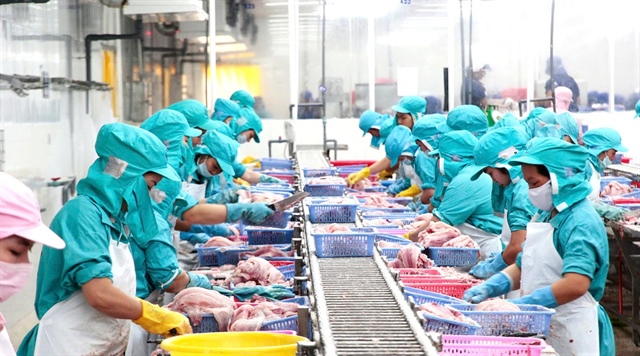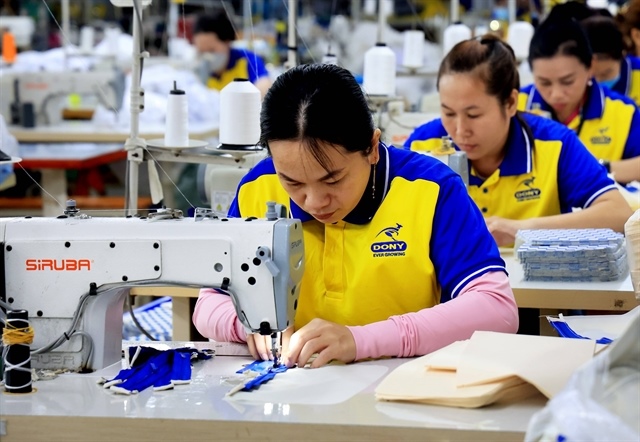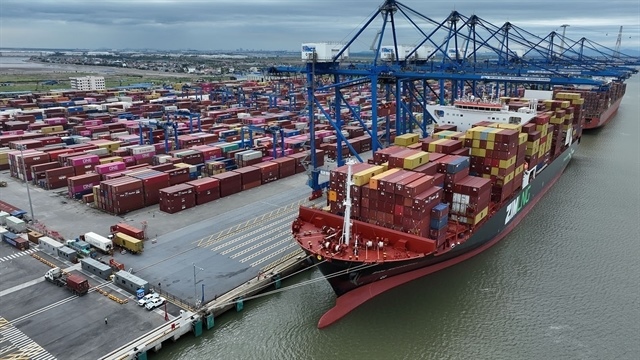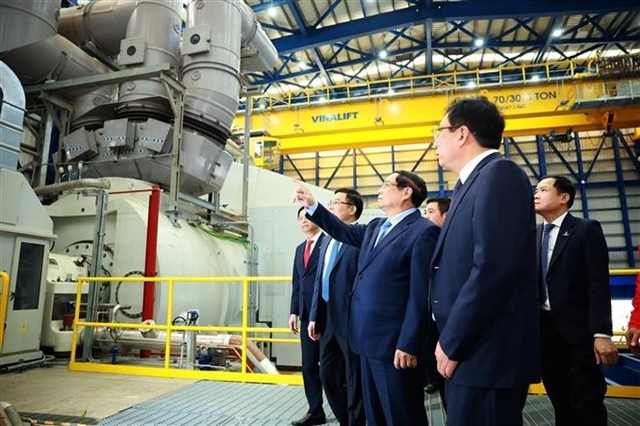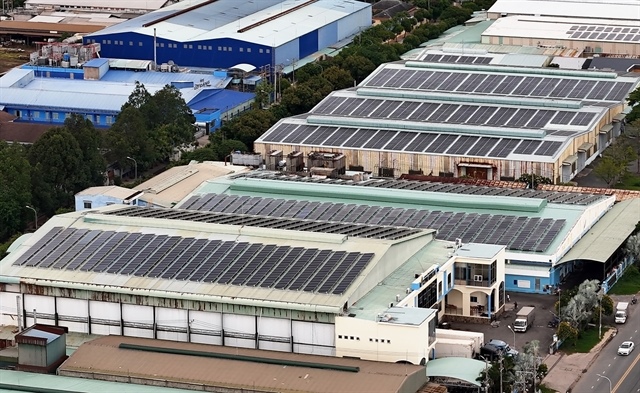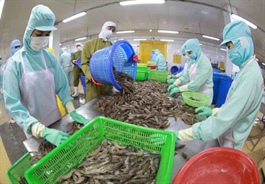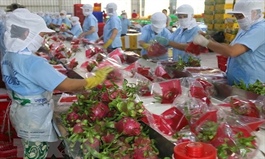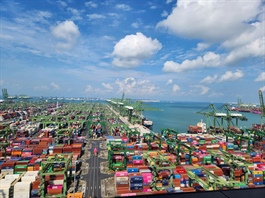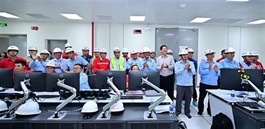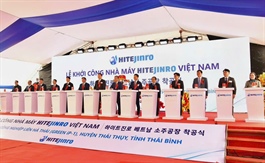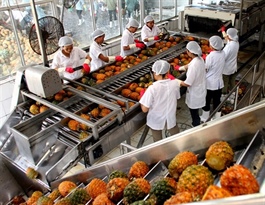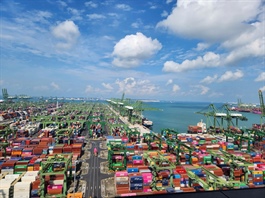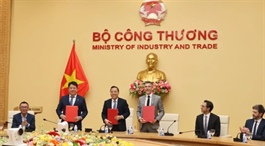Vietnamese firms proactively respond to trade tensions between US and Canada, Mexico, China
Vietnamese firms proactively respond to trade tensions between US and Canada, Mexico, China
The U.S. threatening to impose new tariffs on imports from Canada, Mexico, and China has raised concerns about global trade tensions, as any country with a significant trade deficit with Washington could become a target, including Vietnam.
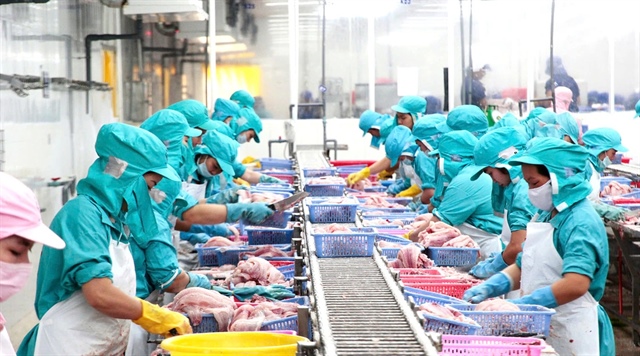
Workers process tra fish for export at a company in Vietnam’s Mekong Delta. Photo: Chi Quoc / Tuoi Tre |
Local experts warned that rising product prices and reduced consumer purchasing power could impact Vietnam, a highly open economy that relies heavily on exports and foreign direct investment (FDI).
As countries increase tariffs on each other’s products, enterprises exporting goods to the U.S., China, or Europe will be hurt, while the risk of additional non-tariff measures could also emerge.
Vietnamese enterprises concerned about impact
Vietnamese businesses should not be complacent in the country’s relationships with the U.S. as the U.S. likely begins targeting countries with which it has large trade deficits, said Dr. Nguyen Quoc Viet, deputy director of the Vietnam Institute for Economic and Policy Research.
As tariff measures and punitive actions between major economies escalate, the prices of goods will soar and enterprises will be forced to pass these tariffs on to consumers.
The U.S. government, and Trump in particular, typically use tariffs as a bargaining tool in trade relations. Any country with a large trade deficit with the U.S. could be targeted, and Vietnam is no exception.
According to Hoang Manh Cuong, co-founder and sales director of dried fruit producer Vinaxo Co. Ltd., China and Mexico are Vietnam’s two top competitors in dried fruit sales to the U.S..
However, the challenge is not just competition, it also includes trade activities within Vietnam itself.
A major hidden risk is that foreign companies, especially from India and China, are setting up factories in Vietnam to import products for re-export or simply repackage Chinese products and export them stateside under the 'Made in Vietnam' label to avoid tariffs.
If not strictly controlled, this could affect Vietnam’s exports, Cuong warned.
Strengthening internal capacity
An inevitable result of trade tensions is the shift in production.
According to Viet, a member of the Vietnam Institute for Economic and Policy Research, enterprises from Northeast Asia could move part of their production to Southeast Asia to avoid tariffs, which would further increase the trade deficit between those countries and the U.S..
If the gap between exports to the U.S. and imports from it continues to widen, Vietnam may face greater scrutiny.
However, this could also present a strategic opportunity. With its position as an attractive destination for global supply chains, Vietnam can attract more U.S. hi-tech companies to invest heavily in the domestic market.
These companies can exploit the Vietnamese market while using Vietnam as a gateway to deeper engagement with Southeast Asia.
Opening up further in the service sector could be an important strategy. If Vietnam can attract leading companies in artificial intelligence, finance, banking, insurance, or education, it could position itself as a regional service hub.
This would not only help balance trade but also create a new growth driver.
Countries cannot immediately balance trade with the U.S.. With clever measures and appropriate market openings, Vietnam may open a new growth space, Viet noted.
To capitalize on opportunities from the supply chain shift and mitigate risks from trade tensions, Vietnam needs to push forward with business environment reforms, infrastructure upgrade, and high-quality human resource development, which are foundations for the country to attract quality investment and gradually become a strategic production and services hub in the region.
Cuong from Vinaxo Co. Ltd. emphasized that the U.S. government is increasingly concerned with balancing trade and its policy changes could significantly impact Vietnam’s export sector.
Adjustments to macroeconomic policies are necessary, Cuong said.
Tight control over trade fraud
The issue of other countries exploiting the 'Made in Vietnam' label for re-export is not new and has been previously raised by the Trump administration.
Cuong hoped the government would have appropriate, timely, and effective directions for exports, especially agricultural shipments, this year.
According to Do Thi Thuy Huong, an executive board member of the Vietnam Electronic Industries Association, amid a complex and unpredictable global geopolitical situation, Vietnam stands out as an attractive destination for technology supply chains.
|
|
| Vietnam exports a large volume of dragon fruits to the U.S.. Photo: N.Tri / Tuoi Tre |
The government’s commitments to supporting investors and attracting high-quality FDI, such as Qualcomm’s investment in chip packaging and Nvidia pledging to support workforce training, are positive signs.
However, 2025 is expected to bring economic and political fluctuations, especially under Trump 2.0 policies.
There will be challenges, particularly in the supply of raw materials and rising logistics costs.
Businesses must always be prepared to face challenges, especially when exporting to the U.S.. The electronics sector may face the risk of new export tariffs or non-tariff barriers.
The production shift to Vietnam will be more strictly monitored, so precautions are needed, Huong suggested.
Quickly diversifying export markets
According to Phan Duc Trung, chairman of the Vietnam Blockchain Association, Vietnamese enterprises should quickly diversify export markets, expanding to the EU, India, the Middle East, and Africa to reduce dependence on the U.S.
Increasing domestic value in export products rather than focusing solely on outsourcing is necessary to reduce the risk of being taxed.
Local firms should also enhance transparency in the certification of product origin while leveraging free trade agreements to minimize dependence on the U.S. market.
Experts shared the view that geopolitical instability and global trade tensions could escalate at any time, especially when countries announced various retaliatory measures.
In this context, Vietnam holds many advantages, such as a stable political environment, a long coastline favorable for trade, and a series of trade agreements offering significant benefits. This is the time to seize the opportunity and turn challenges into advantages.
According to Nguyen Thanh Binh, chairman of the Vietnam Fruits and Vegetables Association, the U.S.’s increase in tariffs on other countries was predicted, and Vietnam may face higher tariffs.
Therefore, it is essential to proactively calculate solutions to avoid damage.
Vietnam currently exports fruits and vegetables to about 80 countries, with the U.S. accounting for about US$300 million.
The sector is trying to reduce dependence on major markets while increasing exports to new markets, such as Africa and the Middle East, Binh added.
Phan Minh Thong, chairman of Phuc Sinh Group, stated that the U.S. and Europe are the top two importers of Vietnamese pepper, which is not subject to tariffs when being exported to the U.S..
However, many sectors could be impacted if the U.S. raises tariffs on products imported from Vietnam.
Phuc Sinh has exported its products to 102 markets and is working to expand further by diversifying its customer base and offering a wider range of processed goods.
This strategy aims to reduce competition, mitigate risks, and minimize potential losses if certain markets impose tariffs, Thong said.
Truong Dinh Hoe, former general secretary of the Vietnam Association of Seafood Exporters and Producers, pointed out that the U.S. is Vietnam’s second-largest seafood importer after China, meaning U.S. trade policies will have a significant impact on the industry.
However, key Vietnamese exports like tra fish and shrimp are staple foods that few other countries produce at scale, making them essential imports for many markets.
Hoe added that while the challenges are real, they also present opportunities -- if Vietnam navigates them effectively.


